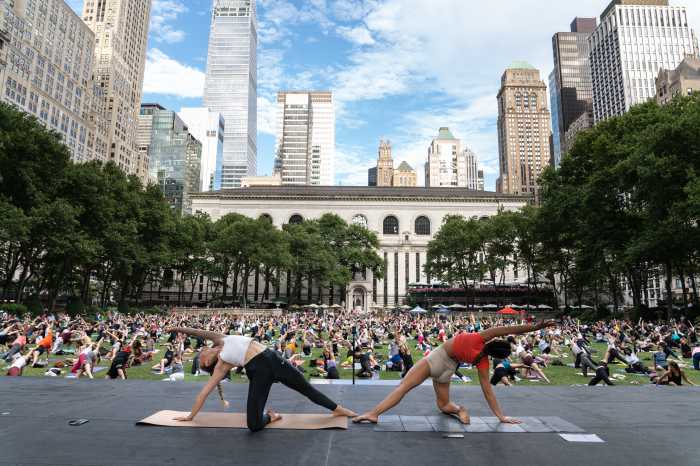
Guide to Staying Safe in the Sun This Summer (and When to Stay Inside)
Nothing says summer like family fun in the sun, but add in hot weather days, and safety is essential. Hanging out in the sun can cause sunburn or even long-term damage, but luckily, you can take steps to ensure your family stays as safe in the sun as possible.
Here are some tips from the National Weather Service, FDA and CDC for staying safe in the sun this summer!
Psst… Beat the Heat! How to Stay Cool in and Around NYC During a Summer Heat Wave
Read Up on the UV Index Forecast
While checking the weather forecast before your day out, take a peek at the UV index forecast as well. The UV index gives you an idea of the expected risk of overexposure to UV radiation from the Sun, and it can help you figure out how much protection you need from the Sun.
A score of zero to five means there’s a low risk of damage when you’re exposed to the sun, and a score of six or higher indicates damage can occur in a short period of time.
If the heat index is high and the weather is 95 degrees or higher, we’re in a heat wave. It is best to stay hydrated and inside an air-conditioned space such as a home, cooling center, or library.
Don’t Skimp on Sunscreen
Sunscreen is an important part of staying safe in the sun. Even on cloudy days, be sure to apply sunscreen before heading outside. When picking a sunscreen, look for a broad-spectrum sunscreen with an SPF of 30 or higher.
Reapply sunscreen every two hours or more frequently if you’re swimming or sweating. Remember to apply sunscreen to the top of your head, if you don’t have a lot of hair!
Add Extra Layers of Protection
Sunscreen isn’t always enough when it comes to protecting yourself from the sun. If you’re looking for extra protection, cover exposed skin with extra layers like long-sleeve shirts, pants and broad-brim hats.
And don’t forget your eyes– throw on a pair of sunglasses to protect them from sun damage.
Seek Out Some Shade
Work some shade breaks into your day outside. Grab a spot under a large tree or other shaded structure. Or, if you’re going somewhere that might not have shade, bring your own! A large umbrella is the perfect way to provide shade for you and your family.
And if you can, try to limit your time in the sun between 10 am and 2 pm, when the sun’s rays are most intense.
Know Risk Factors For UV Radiation Damage
Anyone, regardless of skin tone, is at risk for sunburn and other harmful effects of UV radiation. But certain groups of people are at an increased risk. If you have pale skin, blonde or red hair, have been treated for skin cancer, or have a family member who has had skin cancer, take extra care when going into the sun.
Psst… Check Out New York City Summer Bucket List for Families and Kids 2025
























